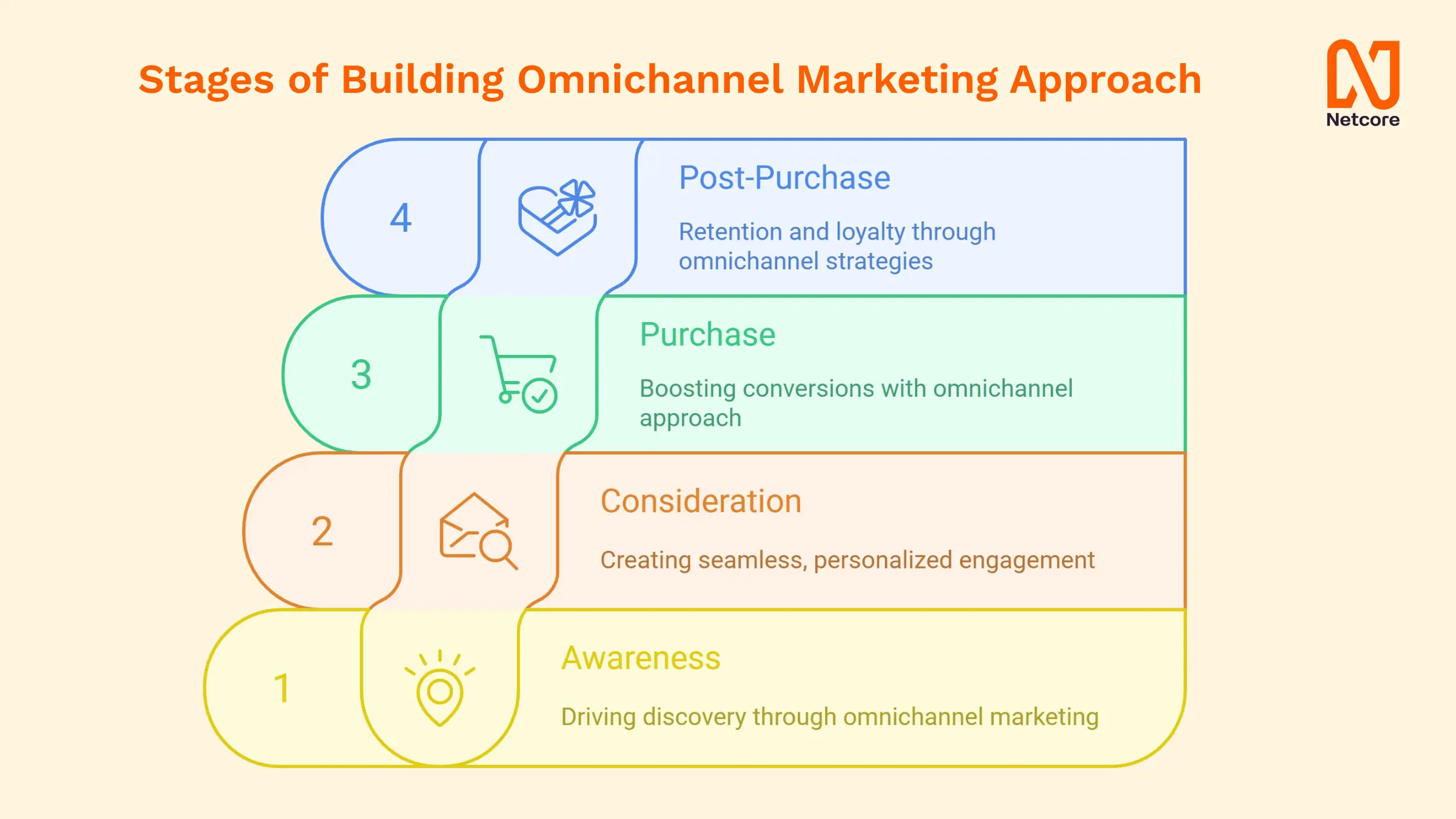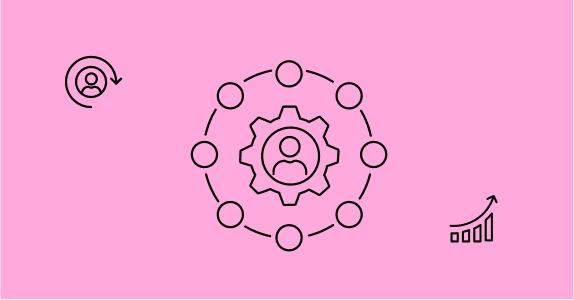TL;DR: Omnichannel Marketing Approach 2025
- Definition: The omnichannel approach creates a seamless, unified customer journey across all channels—online and offline.
- Difference from multichannel: Multichannel = presence everywhere. Omnichannel = connected, consistent experiences everywhere.
- Why it matters: Customers expect personalization, consistency, and speed. Omnichannel is now a competitive necessity.
- Customer journey mapping: Omnichannel supports every stage—awareness, consideration, purchase, and loyalty.
- Best practices: Personalization, automation, AI-driven recommendations, loyalty programs, and unified data management.
- Examples: Disney, Nike, Starbucks, and Amazon show how omnichannel experiences boost loyalty and retention.
- Tools: CDPs, CRMs, marketing automation platforms, and CX tools enable true omnichannel execution.
- Future trends: Hyper-personalization, AR/VR shopping, voice commerce, and first-party data strategies.
If you’re into omnichannel marketing in 2025, you’ve probably noticed this: customers no longer follow neat funnels. They don’t see a Facebook ad, click a button, and check out. Instead, they jump between channels—Instagram, Google, email, WhatsApp, your app, and maybe even your physical store—before making a purchase. That’s where the omnichannel marketing approach comes in. Unlike fragmented strategies, omnichannel connects every touchpoint into a unified customer journey—so whether a shopper starts on your app and finishes in-store, or researches on social and buys via email promo, it all feels seamless.
In this guide, I’ll map how the omnichannel marketing approach works from awareness to loyalty—and show you exactly how to use it to win and retain customers in 2025.
Omnichannel Approach Meaning
The omnichannel approach means creating a connected customer experience across every channel—online and offline—so interactions feel like one journey, not fragmented ones.
What an omnichannel approach means goes beyond just being “present” everywhere. It’s about ensuring consistency and continuity. For example, if a customer browses shoes in your app, those products should show up later in your retargeting ads, cart reminders, or even when they walk into your store.
This approach works because it aligns with how customers actually behave—fluidly, not linearly.
Omnichannel Marketing Approach vs Multichannel: Key Differences
The multichannel approach means being present on multiple platforms, but each channel works in silos. Then, what is omnichannel marketing? The omni channel approach integrates all touchpoints—online and offline—into one seamless customer journey, ensuring consistency and personalization at every stage.
Here’s the distinction:
- Multichannel: You sell through multiple platforms (social, app, store, etc.), but they’re siloed.
- Omnichannel: All channels are interconnected, creating a single, unified experience.
Example: In multichannel, your in-store team may not honor a promo code sent via email. In omnichannel, every channel shares the same data, so the experience is frictionless.
That’s why omnichannel campaigns consistently outperform multichannel ones in both conversion and retention.
Benefits of an Omnichannel Approach
Customers expect seamless experiences. Brands that fail to deliver risk losing them to competitors who do.
Here’s why omnichannel is now table stakes:
- Improved Customer Loyalty
A frictionless, consistent experience across channels builds trust. When customers know they’ll get the same quality of service and personalization everywhere, they’re more likely to return and buy again. - Enhanced Customer Engagement
Omnichannel lets you meet customers where they are—whether it’s email, WhatsApp, your app, or in-store—at exactly the right moment. That kind of timely engagement keeps customers interested and connected. - Increased Conversions
By using behavioral signals to guide customers through the journey, brands can nudge them toward purchase decisions naturally, instead of pushing irrelevant offers. - Deeper Customer Insights
With all channels connected, you don’t just see fragments of behavior—you get a holistic view of preferences and patterns. This allows for better segmentation, more relevant messaging, and smarter marketing decisions.
An omnichannel approach isn’t just “nice to have”—it’s your competitive edge.
The Role of Omnichannel Marketing Approach in the Customer Journey

Omnichannel strategies guide customers seamlessly across awareness, consideration, purchase, and loyalty stages.
Think of it like choreography—every channel has a role, but the dance feels fluid and connected.
- Awareness: Social ads, influencer content, search.
- Consideration: Website, retargeting, comparison content.
- Purchase: Personalized offers, checkout optimization, omnichannel payments.
- Loyalty: Email, push, WhatsApp engagement, loyalty programs.
When every step aligns, customers don’t just buy—they come back.
Awareness Stage: Driving Discovery With Omnichannel Marketing
The awareness stage is about visibility—meeting customers where they already spend time.
Effective tactics include:
- Paid social + influencer campaigns tailored for festive or seasonal moments.
- SEO + content marketing optimized for discovery queries.
- Programmatic ads are personalized based on browsing history.
The goal? Ensure your brand is present and consistent across platforms so customers recognize you instantly.
Consideration Stage: Creating Seamless, Personalized Engagement
During consideration, customers are weighing options. Your job is to make the decision easy.
Tactics that work:
- Retargeting campaigns that showcase browsed products.
- AI-powered product recommendations (e.g., “Complete the look” suggestions).
- Interactive content like quizzes or calculators to guide choices.
When every touchpoint feels personalized and helpful, you move customers closer to “yes.”
Purchase Stage: How the Omnichannel Marketing Approach Boosts Conversions
Omnichannel reduces friction at the most critical stage—checkout.
Conversion-boosting tactics:
- Omnichannel payment options: Wallets, UPI, BNPL, in-store pay-and-pick.
- Cart recovery automation: Emails, WhatsApp nudges, push notifications.
- Time-sensitive offers: Flash sales, countdown timers, limited stock alerts.
The goal is simple: eliminate barriers and make buying effortless.
Post-Purchase Stage: Retention and Loyalty Through Omnichannel Strategies
Omnichannel shines after purchase by building loyalty and repeat sales.
Retention strategies:
- Personalized thank-you messages across email or WhatsApp.
- Loyalty rewards programs synced across app, web, and offline.
- AI-driven recommendations for cross-sell and upsell.
- Omnichannel support (chat, social, in-store service).
Because loyalty isn’t built at checkout—it’s built after.
Examples of Successful Omnichannel Marketing Approaches in Action
Big brands already prove how omnichannel drives results.
- Disney: Seamless journey from booking to in-park app experience.
- Nike: Unified app ecosystem with training, community, and shopping.
- Starbucks: Rewards app + in-store + email = frictionless loyalty.
- Amazon: Personalized journeys across Alexa, website, app, and stores.
The lesson? Omnichannel isn’t theory—it’s already reshaping customer expectations.
Tools and Technologies Powering the Omnichannel Marketing Approach
The right tools make omnichannel possible.
Core categories:
- Customer Data Platforms (CDPs): Segment, mParticle
- CRMs: Salesforce, HubSpot
- Marketing Automation: Klaviyo, Netcore, ActiveCampaign
- Analytics: GA4, Mixpanel
- CX tools: Zendesk, Intercom
Without these, omnichannel is just a strategy document. With them, it’s a scalable reality.
Measuring Success: KPIs for the Omnichannel Marketing Approach
Success = impact on both engagement and revenue.
Metrics to track:
- Customer retention rate
- Customer lifetime value (CLV)
- Net promoter score (NPS)
- Engagement across touchpoints
- Conversion rate lift from personalization
Because if you can’t measure it, you can’t optimize it.
Future Trends Shaping the Omnichannel Marketing Approach
The future is AI-driven, immersive, and privacy-conscious.
Key trends to watch that shape omnichannel marketing approach:
- Hyper-personalization with generative AI
- AR/VR shopping experiences
- Voice commerce adoption
- First-party data reliance (post-cookie world)
- Seamless cross-border ecommerce journeys
Brands that adapt fast will lead. Those that don’t? They’ll fade into the noise.
Final Take: Building a Successful Omnichannel Marketing Approach
The omnichannel marketing approach isn’t just about being everywhere—it’s about being connected everywhere. To build it successfully, focus on four essentials:
- Understand Your Customer: Map how they move between channels and where they prefer to engage.
- Integrate Your Channels: Break silos so data, offers, and experiences flow seamlessly.
- Personalize Experiences: Use insights and AI to deliver relevant, contextual messaging.
- Create a Cohesive Journey: Ensure every interaction feels like part of one story, not disconnected campaigns.
- Monitor and Optimize: Track KPIs like retention, CLV, and conversions to refine continuously.
The bottom line: Brands that master these pillars will not only improve customer loyalty and conversions but also future-proof their marketing for 2025 and beyond.
 Holiday Sales Are Won Now — Grab the 2025 Holiday Marketing Guide to Unlock More Revenue.
Holiday Sales Are Won Now — Grab the 2025 Holiday Marketing Guide to Unlock More Revenue. 













